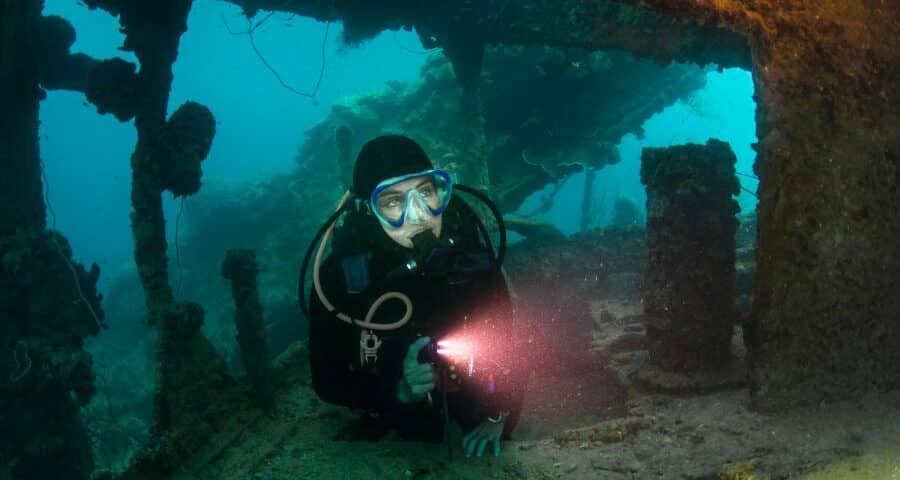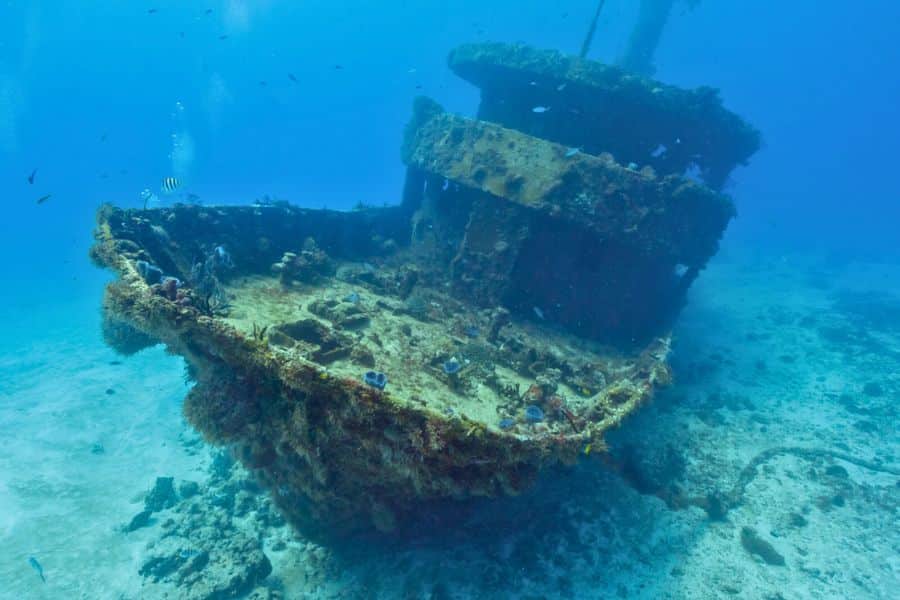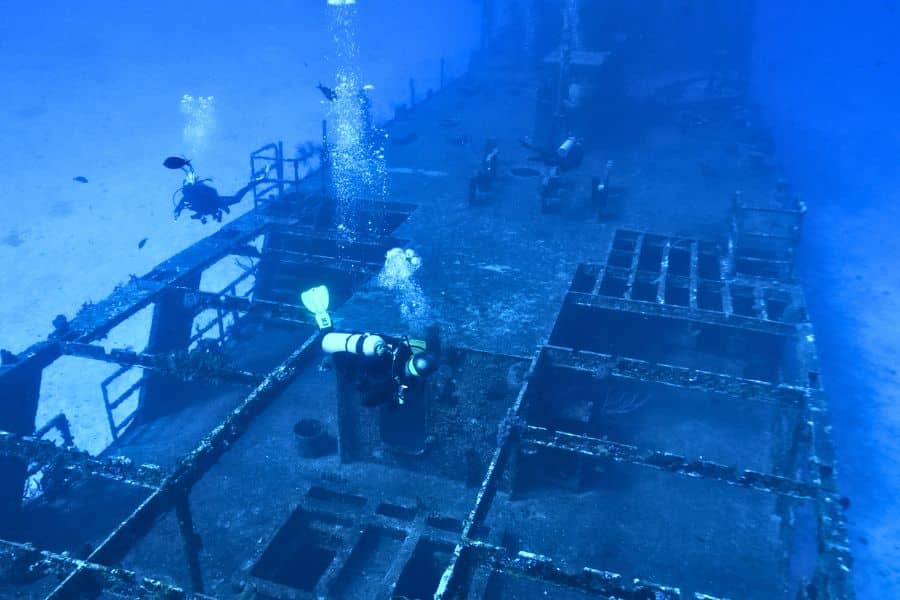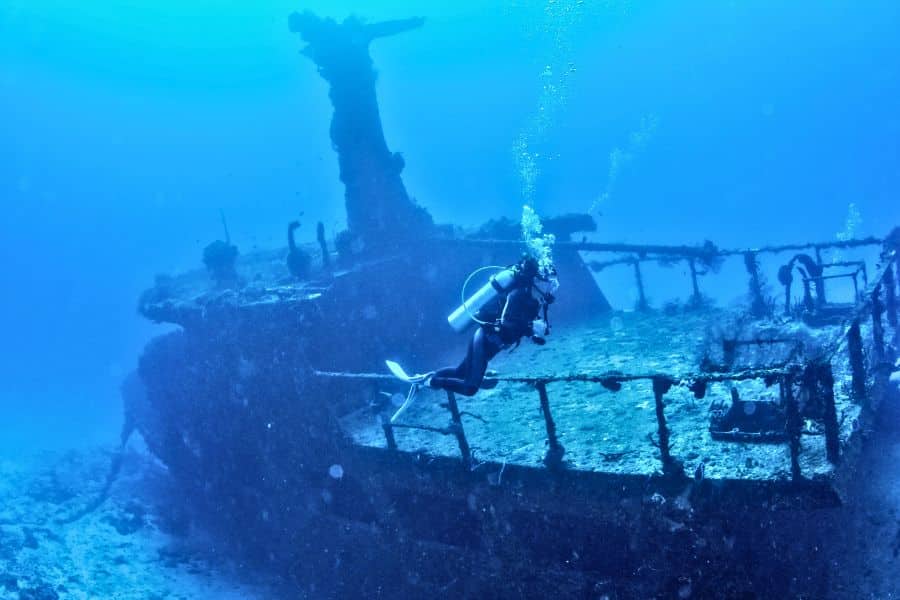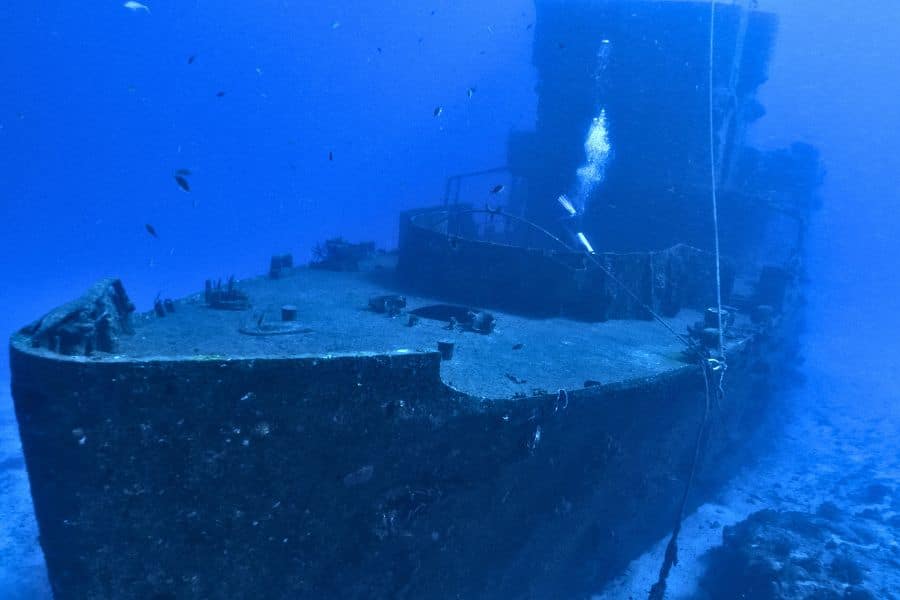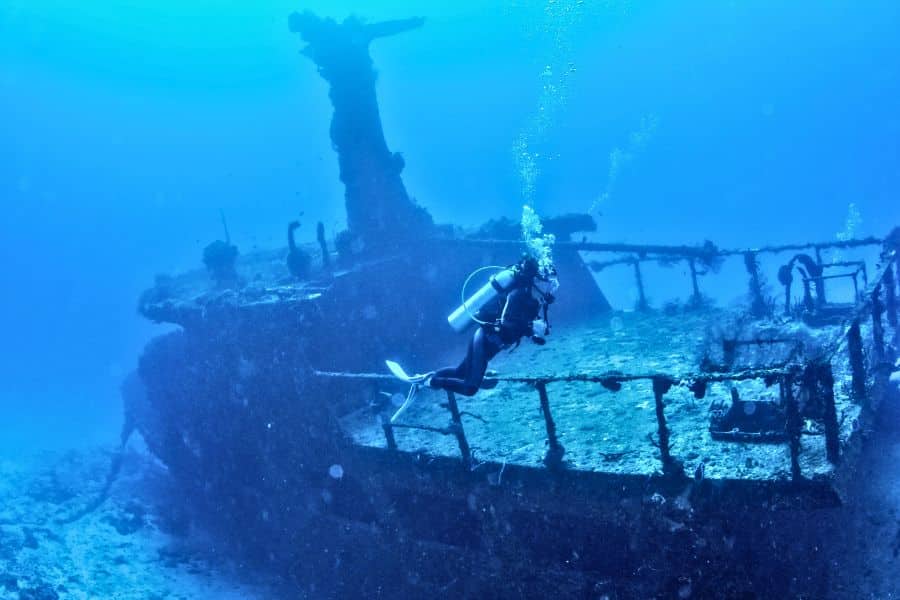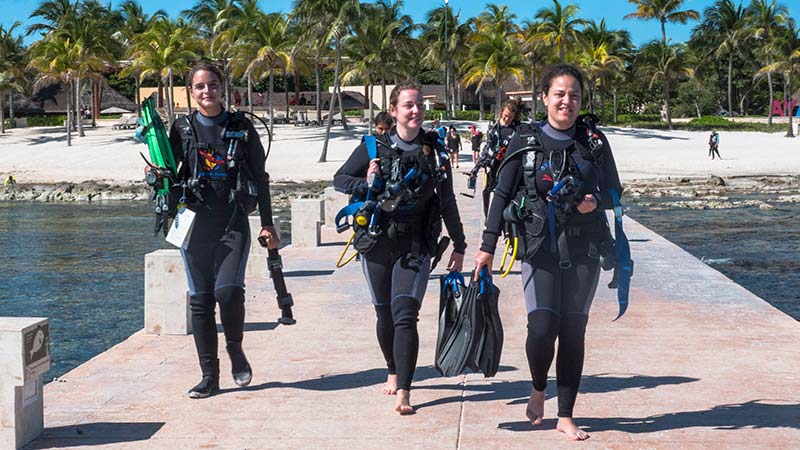2. Other Caribbean Shipwrecks Worth Exploring
Here’s a glimpse into the legendary and historic Caribbean shipwrecks, where pirate ships and old wrecks still tell their mysterious tales, waiting to be explored.
2.1. SS Sapona: An Iconic Shipwreck in the Bahamas
The SS Sapona, a concrete cargo ship, sank in 1926 near Bimini, Bahamas, after being stranded during a hurricane.
The SS Sapona rests just a few kilometers off South Bimini’s coast, at a depth of about 4.5 meters (15 feet). This makes it a perfect spot for both beginner divers and those looking for a relaxing snorkeling experience.
The wreck has undergone significant erosion, leaving parts of its structure exposed.
Diving Experience
The area surrounding the SS Sapona is teeming with marine life. Divers and snorkelers can spot tropical fish, turtles, and occasionally sharks. The combination of the wreck’s structure and vibrant marine life creates an exciting ecosystem to explore. The water clarity usually provides excellent visibility.
2.2. SS Stavronikita: An Iconic Caribbean Shipwreck in Barbados
The SS Stavronikita is one of the most iconic Caribbean shipwrecks in Barbados and a renowned diving hotspot. This Greek freighter sank in 1976 and has become a must-visit site for divers worldwide.
The SS Stavronikita lies at a depth of about 30 meters (100 feet), making it more suitable for experienced divers.
Diving Experience
The wreck is well-preserved, and divers can explore its cabin, hallways, and cargo holds. The massive masts, which rise just 6 meters from the surface, are covered in sponges, corals, and a variety of fish, making it a photogenic spot and a favorite for underwater photographers.
The SS Stavronikita is considered one of the best Caribbean shipwrecks in Barbados. Visibility in the area is typically excellent, offering divers a visually stunning experience.
2.3. Spiegel Grove (Florida, USA)
Spiegel Grove is one of the most famous Caribbean shipwrecks. This US Navy assault ship was intentionally sunk in 2002 to create an artificial reef.
At 155 meters (510 feet) long, this wreck is an impressive site that attracts divers from all over the world. It lies at a depth of about 30 meters (100 feet)
Diving Experience
Divers can explore the wreck’s interior and exterior and enjoy the surrounding marine life, including tropical fish and corals.
2.4. Bianca C (Grenada)
Known as the “Titanic of the Caribbean,” the Bianca C is an ocean liner that sank in 1961. This wreck is famous for its size and the history behind it.
Diving Experience
The Bianca C rests at a depth of 50 meters (164 feet) and it is considered the longest shipwreck in warm waters, allowing divers to explore a wide range of areas, from the bow to the stern.
The wreck is home to a rich diversity of marine species, making it a prime spot for underwater photography.
2.5. SS Oriskany: The Largest Shipwreck in the World
The SS Oriskany is an Essex-class aircraft carrier that sank in 2006, becoming the largest wreck in the world that divers can explore. This monumental Caribbean shipwreck is located about 22 miles off the coast of Pensacola, Florida.
The Oriskany measures 911 feet (277 meters) long, 148 feet (45 meters) wide, and 129 feet (39 meters) high, making it an awe-inspiring destination for divers.
Diving Experience
The wreck lies at a depth of 60 meters (200 feet), making it suitable only for advanced divers. Strong currents in the area can make the dive challenging, so prior experience is recommended.
Diving the SS Oriskany offers a unique experience, with divers able to explore multiple levels of the ship, including the flight deck and several other decks. The wreck’s structure is full of passageways and spaces that allow exploration.




